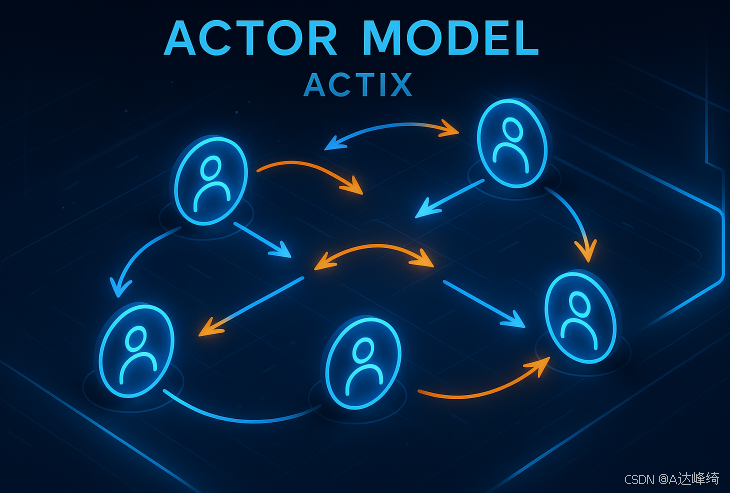引言
在并发编程领域,Actor模型作为一种优雅的并发抽象,通过消息传递实现了状态隔离与并发安全。Actix框架将这一模型深度融入Rust生态,借助Rust的所有权系统和类型安全特性,构建了高性能的异步编程范式。

Actor模型的核心理念
Actor模型的本质是将计算单元封装为独立的Actor,每个Actor拥有私有状态,仅通过异步消息进行通信。这种设计天然避免了共享状态的竞态条件,与Rust的"无畏并发"理念不谋而合。
在Actix中,Actor通过实现Actor trait来定义:
use actix::prelude::*;
struct Counter {
count: u32,
}
impl Actor for Counter {
type Context = Context<Self>;
fn started(&mut self, _ctx: &mut Self::Context) {
println!("Counter actor started");
}
}消息处理的类型安全实践
Actix通过类型系统保证消息处理的安全性。每个消息必须实现Message trait,并定义其返回类型:
#[derive(Message)]
#[rtype(result = "u32")]
struct GetCount;
#[derive(Message)]
#[rtype(result = "()")]
struct Increment(u32);
impl Handler<GetCount> for Counter {
type Result = u32;
fn handle(&mut self, _msg: GetCount, _ctx: &mut Context<Self>) -> Self::Result {
self.count
}
}
impl Handler<Increment> for Counter {
type Result = ();
fn handle(&mut self, msg: Increment, _ctx: &mut Context<Self>) {
self.count += msg.0;
}
}这种设计的深度在于:编译器在编译期就能验证消息类型匹配,避免运行时错误。
实战:构建分布式计数器系统
让我们实现一个更复杂的场景------协调多个Worker Actor的Supervisor:
struct Supervisor {
workers: Vec<Addr<Counter>>,
}
impl Actor for Supervisor {
type Context = Context<Self>;
fn started(&mut self, ctx: &mut Self::Context) {
// 启动多个worker
for _ in 0..4 {
let worker = Counter { count: 0 }.start();
self.workers.push(worker);
}
}
}
#[derive(Message)]
#[rtype(result = "u32")]
struct AggregateCount;
impl Handler<AggregateCount> for Supervisor {
type Result = ResponseActFuture<Self, u32>;
fn handle(&mut self, _msg: AggregateCount, _ctx: &mut Context<Self>) -> Self::Result {
let futures: Vec<_> = self.workers
.iter()
.map(|worker| worker.send(GetCount))
.collect();
Box::pin(
async move {
let results = futures::future::join_all(futures).await;
results.into_iter()
.filter_map(Result::ok)
.sum()
}
.into_actor(self)
)
}
}深度思考:背压与流控
在生产环境中,必须考虑消息积压问题。Actix提供了邮箱容量控制:
impl Actor for Counter {
type Context = Context<Self>;
fn started(&mut self, ctx: &mut Self::Context) {
ctx.set_mailbox_capacity(1000); // 限制邮箱大小
}
}当邮箱满时,发送操作会返回MailboxError,调用方可据此实现退避策略或负载均衡。这体现了Actix对错误处理的审慎设计------将失败显式化,而非静默丢弃。
性能优化实践
利用Rust的零成本抽象,我们可以通过SyncArbiter创建线程池来处理CPU密集型任务:
let addr = SyncArbiter::start(4, || Counter { count: 0 });这会创建4个线程,每个运行独立的Actor实例,充分利用多核优势。
结语
Actix将Actor模型与Rust的类型系统深度结合,实现了既安全又高效的并发编程范式。通过所有权检查消除数据竞争,通过类型系统保证消息契约,这种设计哲学值得每一位系统架构师深思。
正如Rob Pike所言:"Don't communicate by sharing memory; share memory by communicating." Actix正是这一理念在Rust生态中的完美实践。 🚀
希望这篇文章能帮助你深入理解Actix中的Actor模型!有任何问题欢迎继续讨论~ 💪